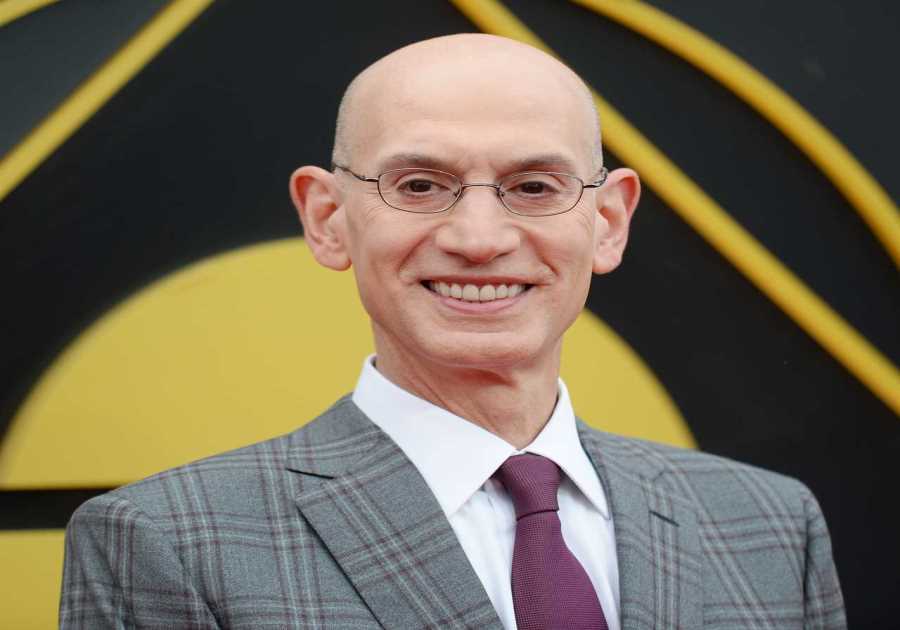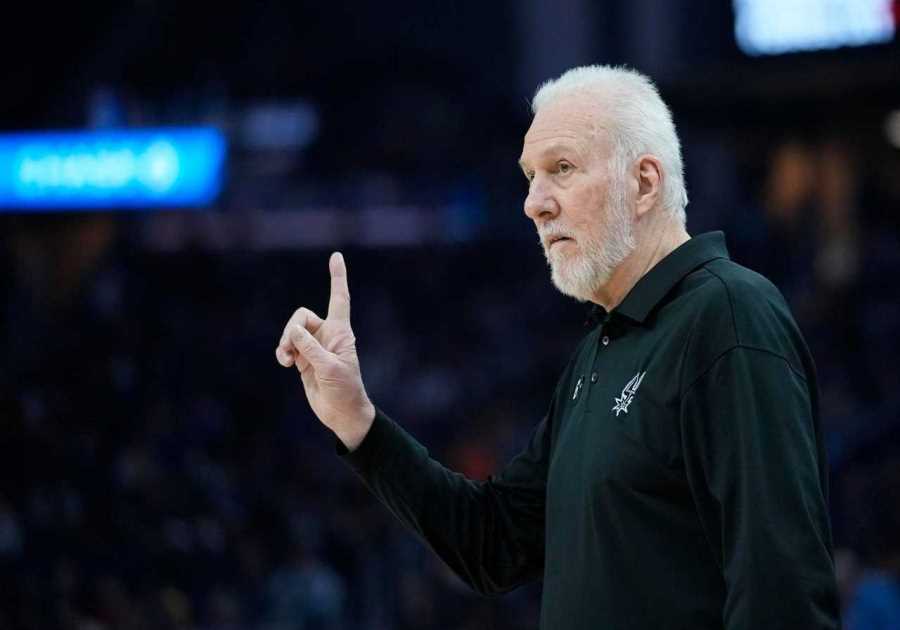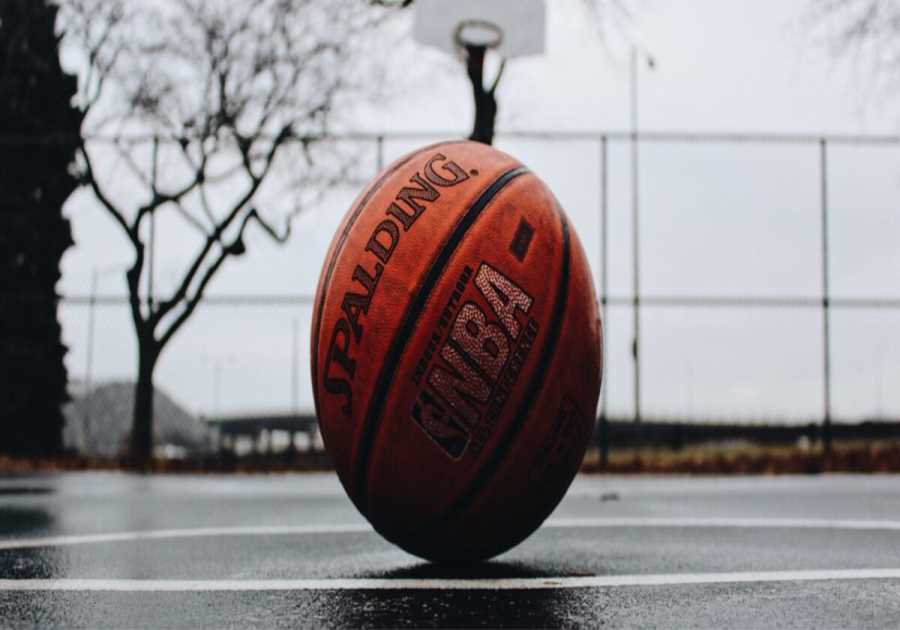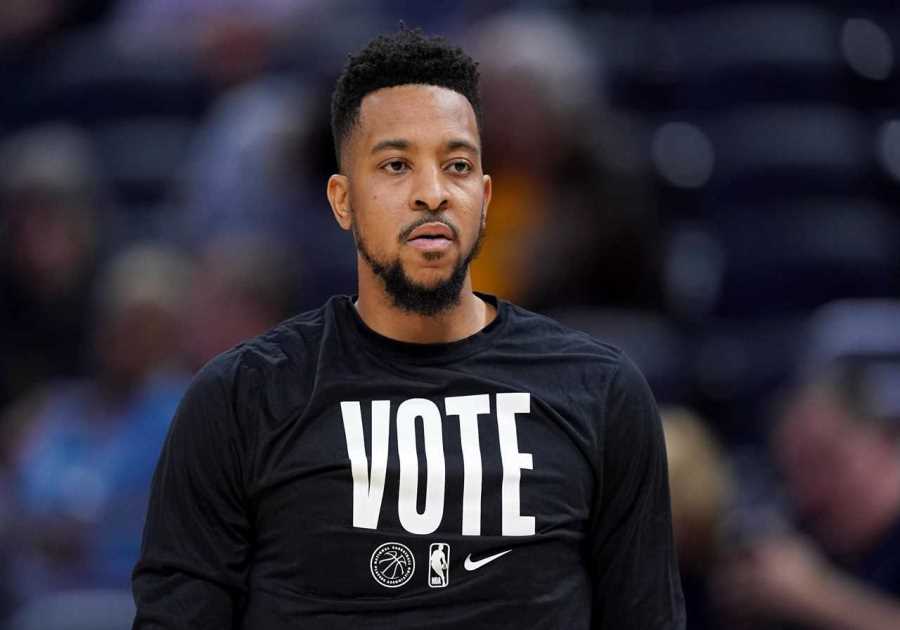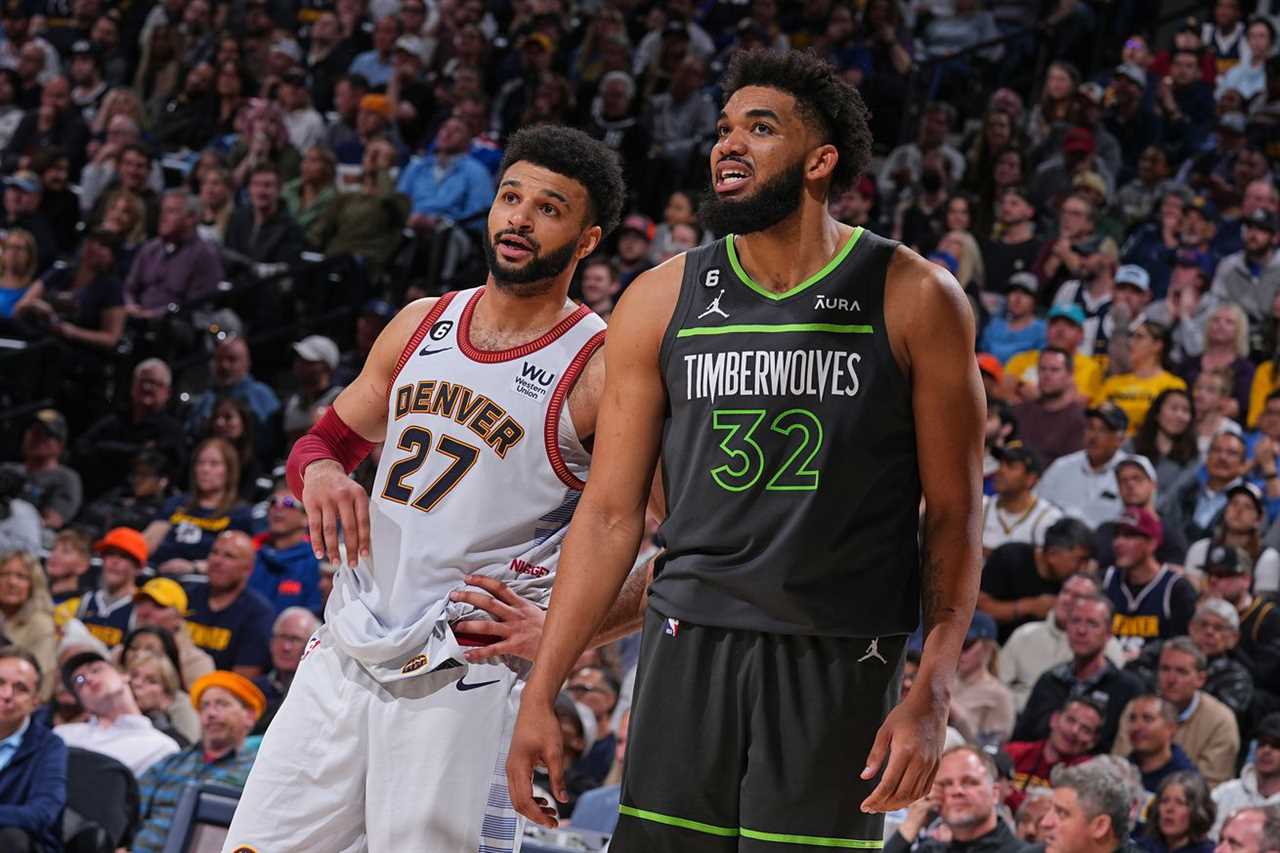
Photo by Bart Young/NBAE via Getty Images
Unearthing the good, the bad, and the wonky.
The Portland Trail Blazers are rumored to be active on the 2023 NBA trade market, dangling the third overall pick in the 2023 NBA draft, shooting guard Anfernee Simons, and other assets to try and land a big fish to swim next to seven-time All-Star Damian Lillard. The Blazer’s Edge Mailbag has been overwhelmed with questions about the possibility, and suitability, of Portland’s supposed targets in this year’s swap circus. Even those inquiries couldn’t cover the scope of players the Blazers have been linked to.
As we reset before Thursday’s draft—with its potential for early news of trade plans—we’re going to rank the major players whirling around Portland in the media circus. Some of these have come from national sources, others local. A few have appeared in the ether subtly, like a dog passing gas in a mini-van. Either way, here are our fairly-reasonable guesses about the potential for each player in Portland.
Today we’re going to cover the less-attractive prospects. Tomorrow we’ll delve into the deals that might have a ghost of a chance of working.
Terrible Ideas
Kristaps Porzingis
I’m not sure where this came from, but apparently there’s a suggestion of the third pick for Kristaps Porzingis out there. If you took a million Neil Olsheys and locked them in a room for a million years, you could hardly come up with a worse exchange. Porzingis is not a game-changing defender. Don’t let those blocks fool you. His per-36 numbers last year equaled Jusuf Nurkic’s career average, and Nurk isn’t exactly known as a shot-blocking intimidator. Porzingis is on the last year of a $36 million contract, meaning the Blazers would need to send other salaries out to bring him in AND they wouldn’t be sure he was staying. He might be worth a look at a lesser price, but the third pick for him would be insane.
Zach LaVine
Unlike Porzingis, Zach LaVine is under contract through 2026 or 2027, depending on his affinity for a player option in the final year. His salary ranges between $40 and $49 million during that span. That’s not horrible for a 28-year-old two-time All-Star scoring 25 per game. But that’s what LaVine does: score 25 per game. The Blazers already have Anfernee Simons who’s almost at that level. LaVine is clearly a more accomplished player and scorer, but Simons won’t take over the ball from Lillard or create a culture conflict. LaVine doesn’t play defense either. Either Brandon Miller or Sccot Henderson would have a far better chance of boosting the Blazers to the next level than LaVine would. This deal might make sense if the Blazers were trading Lillard. Otherwise, no.
Karl-Anthony Towns
Karl-Anthony Towns was once coveted as a unique, multi-faceted, athletic scoring center. He had the potential to become a generational star at his position, especially since the NBA has lacked great big men for most of the last decade. Eight seasons in, Towns is playing power forward, drifting outside with his shot selection, slowing down due to injuries, and showing little sign of backing up his four All-Star appearances with a memorable career. He’s still capable of putting up offensive numbers, but no defense, no inspiration, and no wins for his team make him a bad bet for Portland, as they need all those things and more. Add in Towns’ max-max contract and this deal becomes a bungle for the Blazers.
Overreach
As much as the Blazers would like to be Ariana Grande on the market (“I see it, I like it, I want it, I got it”), the third pick and your second-best player only have so much purchasing power. A couple of the names suggested for Portland are probably beyond their credit limit.
Mikal Bridges and Bam Adebayo
Mikal Bridges and Bam Adebayo stand out on Portland’s wish list. Both are young, defensively apt, and big scorers. They’re the next generation of stars, if not superstars.
That’s exactly why their incumbent teams are committed to keeping them. The Brooklyn Nets and Miami Heat are playing Moe Greene vs. Michael Corleone with the Blazers. “You don’t buy me out, I buy YOU out.” Each team comes to the table convinced they can talk the other out of their prized player, committed to not letting it happen to them. The most likely outcome is a stalemate, with both sides walking away shaking their heads.
OG Anunoby
OG Anunoby is not at the level of Bridges and Adebayo. Apparently, the Toronto Raptors think he is. That’s an issue for the Blazers, who would presumably like to obtain him for less than four first-rounders plus Simons.
Anunoby only makes $18.5 million, making him far more approachable than most on this list. His contract only runs through next season, though. The Blazers would need some guarantee of him re-signing. If he’s not doing that with Toronto, would he do it with Portland? That complication, plus the exorbitant asking price, probably make this a no-go.
To be clear: if the Blazers could actually pull off one of these acquisitions at a reasonable price, more power to them! It just doesn’t seem like a realistic expectation at this point.
2019 Called
Paul George
Los Angeles Clippers forward Paul George has been rumored in play for the third pick. He’s making a whopping $45 million next season, so it’s hard to see how the financials would work in that kind of swap. He has a player option the year following as well, making this a huge speculation for Portland.
At 32 years of age, George still put up 23.8 points, 6.1 rebounds, and 5.1 assists over 56 games last season. That was his high-water mark for games played since 2018-19. That’s one red flag. The Clippers’ disappointing performance despite featuring George is another. He’s still an amazing skill fit. He’s not the defensive game-changer he was back in 2019 when he was 28 and a perennial All-Star.
This trade would have been perfect four years ago. At this point, it reeks of desperation. If the Blazers got two good years out of it, they’d be doing well. The next Paul George is supposedly sitting at the #3 position in the draft, however. And he’d come much cheaper.
Tomorrow: Deals that might actually work for the Blazers and their trading partners.
Dave Deckard
https://www.blazersedge.com/2023/6/20/23767247/portland-trail-blazers-trade-rumors-2023-nba-draft-bam-adebayo-towns-george-lavine-siakam-ayton
By: Dave Deckard
Title: Ranking the Biggest Blazers Trade Prospects
Sourced From: www.blazersedge.com/2023/6/20/23767247/portland-trail-blazers-trade-rumors-2023-nba-draft-bam-adebayo-towns-george-lavine-siakam-ayton
Published Date: 06-21-2023
Frequently Asked Questions
Who holds record for most NBA career playoff wins?
LeBron Jam is the leading figure in the NBA Playoffs history with 174 wins and 266 games, so it's no surprise that he's one of the most sought after basketball players.
What does NBA mean when it says waived?
"Waived" in the NBA is an official release of a player from their team's roster. This can be done for various reasons, including salary cap reasons, personal issues, or disciplinary action. If a player is deemed to be unrestricted and free to sign with any team within the league, they can become a restricted free agent. If the player was not waived by March 1st, the previous season, they will not be eligible to play in this year's postseason.
Who invented basketball
While it isn't known exactly where basketball originated, it's widely believed that James Naismith (now Springfield College), was a teacher at the International Young Men's Christian Association's Training School (now Springfield College). Naismith created the rules and attached a peach basket to an elevated track. He formed nine teams from his 18-member class and began to teach them the basics. The original version featured a soccerball, two peach baskets and a gymnasium. Players could only shoot at the basket from below; goaltending was not yet a part of the game. The game gradually spread across America, and by the early 1900s, basketball had become an organized sport with professional teams playing in large arenas. It is now one of most popular sports around the world.
What is the difference between technical fouls and flagrant fouls in the NBA?
A technical foul is an offense in the NBA for being unsportsmanlike. It can be argued with officials, excessive celebrations or other such behavior. A technical foul allows you to make one free throw, while the opposing team can also take possession of your ball.
Flagrant fouls occur when a teammate makes excessively violent or aggressive contact. It results in two free throw attempts for the opposing team and possession of the ball. Flagrant one is the most severe and Flagrant 2 is the least. Flagrant one is less severe than Flagrant two and does not result in an ejection from the game.
A personal foul is an illegal contact between players on the court. This is typically a result of illegal hand-checking and holding, pushing, pushing or tripping an opponent. Personal fouls can also result in free throw attempts and possession of the ball for the opposing team. Personal fouls are not the same as flagrant or technical fouls. However, they can be a sign of unsportsmanlike behavior.
In the NBA, any foul can result in free throws or possession of ball for the opposing teams. It is the intent behind the fouls and the severity of the contact that makes the difference between technical fouls and flagrant or personal fouls.
Statistics
- The 2013–14 season opened with 92 international players on the opening night rosters, representing 39 countries and over 20% of the league. (en.wikipedia.org)
- As of 2014, 45 percent of its viewers were black, while 40 percent were white, making it the only top North American sport that does not have a white majority audience.[102]As of 2017Democrats than Republicans.[103]Outside (en.wikipedia.org)
- Between 2012 and 2019, the league lost 40 to 45 percent of its viewership. (en.wikipedia.org)
- Williams would 'likely' accept a deal worth $14-15M/year; Celtics are 'unlikely' to offer such a deal (HoopsHype) (bleacherreport.com)
- The 2013–14 season opened with 92 international players on the opening night rosters, representing 39 countries and over 20 percent of the league. (en.wikipedia.org)
External Links
si.com
nba.com
sports.yahoo.com
- Mail, Weather, Search, Politics, News, Finance, Sports & Videos
- Game 1 of NBA Finals sees lowest viewership in recorded ratings history
bleacherreport.com
How To
What compensation is offered to NBA players for being injured?
NBA players with guaranteed contracts get their money in full, even if they are unable or injured to play. Some even have made millions playing basketball without ever having to play a single game. Their contract may be terminated or they could lose their bonuses. Players on non-guaranteed contracts, however, will typically not receive any pay until they are healthy enough to play in the NBA again. Although the NBA can offer some assistance, such as a lump sum settlement or disability payments, it is not guaranteed that players will receive any pay during an injury absence. Additional assistance may be offered by the league or teams on a case-by–case basis.
The Injury Disability Plan can be used to help teams. It all depends on the situation of each individual and his team. Sometimes players can negotiate with their teams to get some money while they are out of town due to injury. Although there are no guarantees regarding payment, players should understand that the league and their team can assist them. Each situation is different and should be evaluated individually. The NBA has established a set of rules that govern injuries and payments to players for absences due to injury. This will help players understand the rules and make informed financial decisions. If you have any questions or concerns it is important to talk with a professional.

